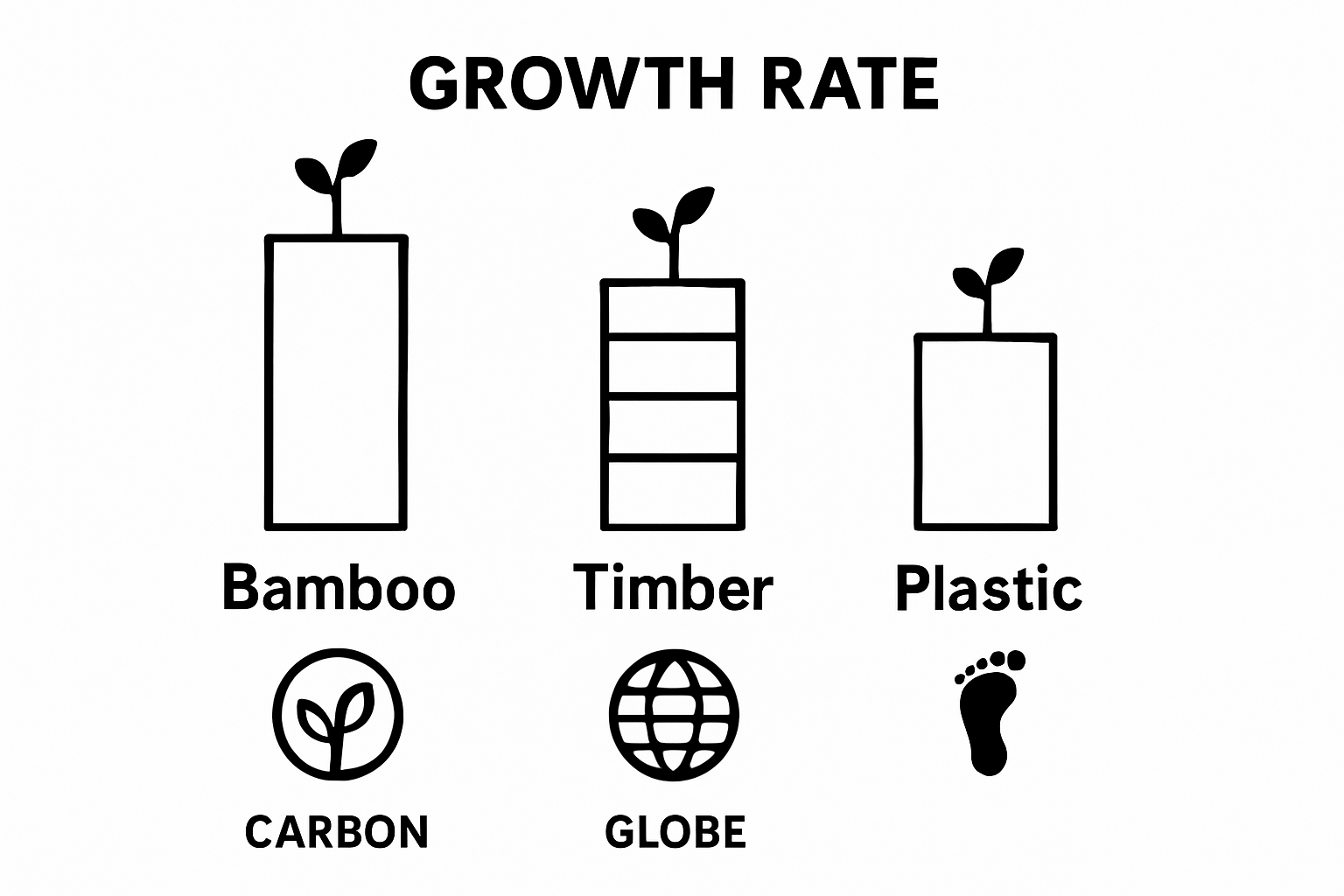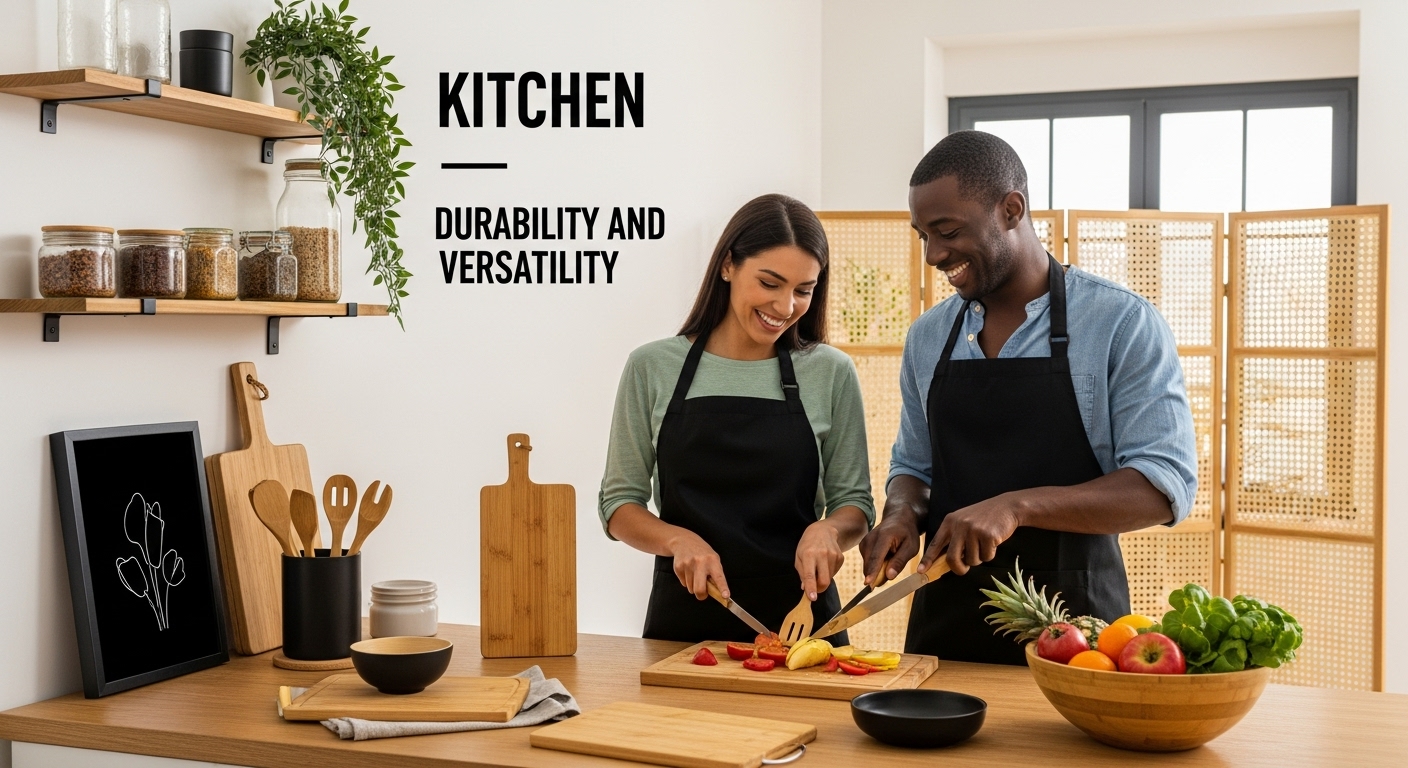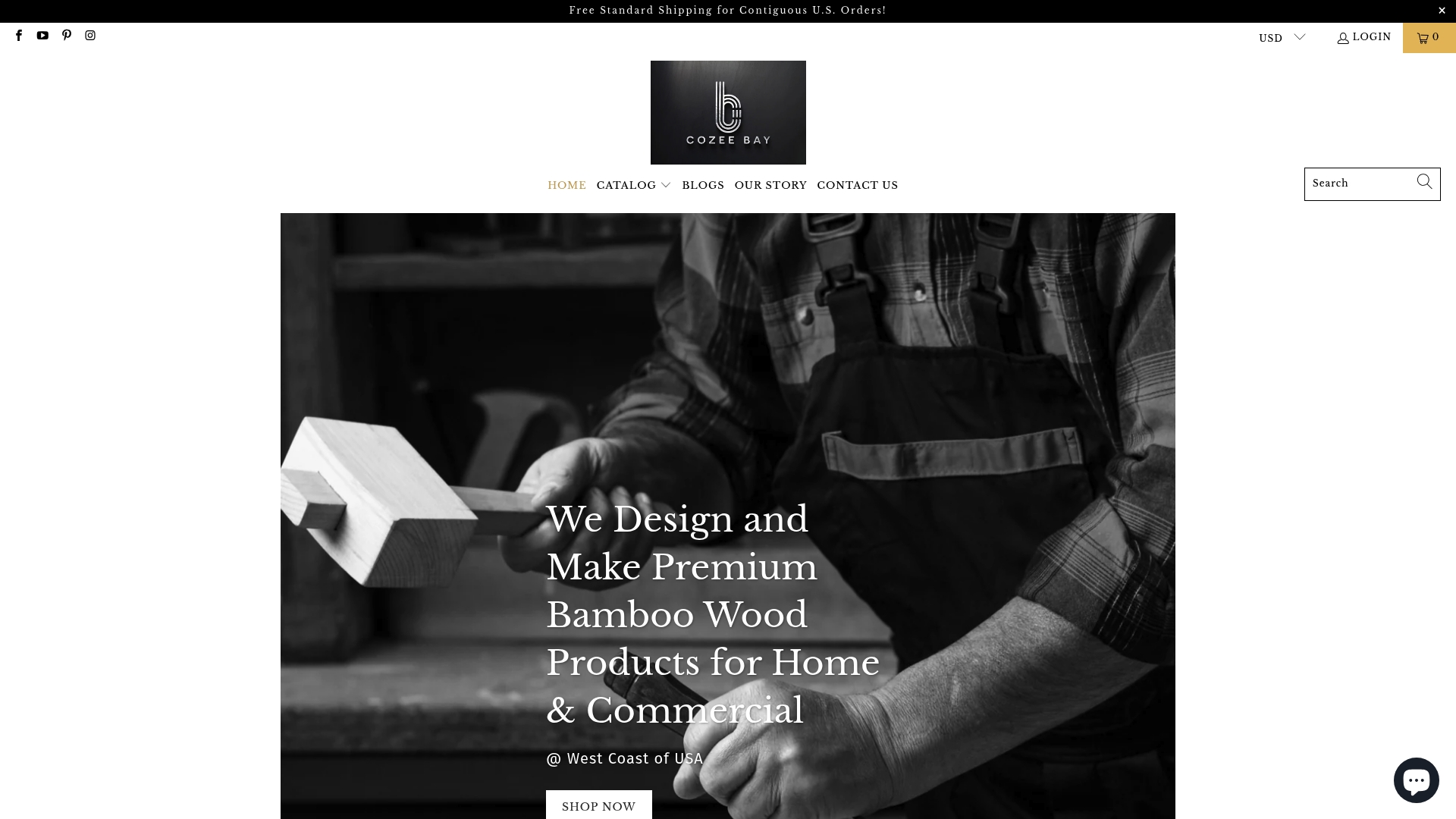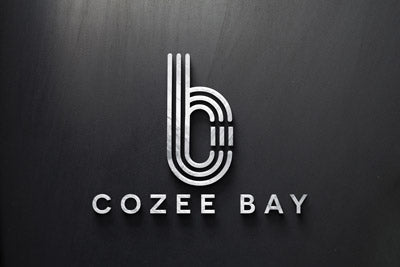Your Cart is Empty
Free Standard Shipping for Contiguous U.S. Orders!
Free Standard Shipping for Contiguous U.S. Orders!
Catalog

Why Choose Bamboo Decor: Understanding Its Benefits
September 26, 2025 9 min read
Bamboo decor is taking modern interiors by storm, and it is easy to see why. Most people think of it as just another natural material, but bamboo actually absorbs about 35 percent more carbon dioxide than traditional wood plants. That hidden superpower turns every bamboo accent into a bold move for both style and the planet.
Table of Contents
- What Is Bamboo Decor And Its Significance?
- The Sustainability Factor: Why Bamboo Matters
- Aesthetic Appeal: How Bamboo Enhances Spaces
- Practical Benefits: Durability And Versatility Of Bamboo
- Cultural And Historical Context Of Bamboo In Design
Quick Summary
| Takeaway | Explanation |
|---|---|
| Bamboo is an eco-friendly decor choice. | Incorporating bamboo into your home supports sustainability and reduces environmental impact without sacrificing style. |
| Bamboo has superior durability and strength. | This material offers high resistance to moisture, pests, and wear, making it last longer in various applications. |
| Bamboo provides unique aesthetic appeal. | Its natural textures and variations allow for visually striking decor that enhances any interior space. |
| Bamboo supports local economies and communities. | Utilizing bamboo products contributes to economic growth for communities involved in its cultivation and production. |
| Bamboo symbolizes cultural heritage and sustainability. | Its long history in many cultures reflects adaptability and a commitment to ecological harmony in design. |
What is Bamboo Decor and Its Significance?
Bamboo decor represents a sustainable and innovative approach to interior design that transforms living spaces through environmentally conscious materials. Unlike traditional decorative elements, bamboo offers a unique blend of aesthetic appeal, functional durability, and ecological responsibility. Learn more about bamboo’s home applications.
Understanding Bamboo as a Decorative Material
Bamboo is not merely a plant but a versatile material that has revolutionized modern interior design. Technically classified as a grass, bamboo possesses remarkable properties that make it exceptional for decor. According to environmental research, bamboo absorbs approximately 35% more carbon dioxide compared to traditional wood plants, making it a powerful tool in sustainable design.
Key characteristics of bamboo that elevate its status in decor include:
- Rapid Regeneration: Grows significantly faster than traditional timber
- High Strength: Provides durability comparable to hardwood materials
- Natural Aesthetic: Offers a warm, organic visual texture
- Environmental Friendliness: Minimal ecological impact during harvesting
Significance in Modern Interior Design
The significance of bamboo decor extends beyond its visual appeal. It represents a conscious choice toward environmental stewardship and responsible consumption. By incorporating bamboo elements, homeowners and designers make a statement about sustainability without compromising on style or quality.
Bamboo’s versatility allows it to transcend traditional design boundaries. From intricate wall hangings and minimalist furniture to functional kitchen accessories and decorative room dividers, bamboo adapts seamlessly to various design aesthetics. Its natural variations in color and texture provide designers and homeowners with a rich palette of design possibilities.
Moreover, bamboo decor is not just a trend but a long-term investment in both environmental preservation and interior design innovation. Its inherent properties of resistance to moisture, pests, and wear make it an intelligent choice for those seeking durable and sustainable home solutions.
The Sustainability Factor: Why Bamboo Matters
Sustainability has become more than a buzzword in modern design it is a critical consideration for environmentally conscious consumers and designers. Bamboo emerges as a champion of ecological responsibility, offering unprecedented potential for reducing environmental impact. Learn more about bamboo sustainability.
Environmental Impact and Regenerative Potential
Bamboo represents a remarkable solution to traditional resource consumption. According to ecological research, bamboo can grow up to 3 feet per day in optimal conditions, making it one of the fastest-growing plants on the planet. This extraordinary growth rate provides significant environmental advantages over traditional timber sources.
Key environmental benefits of bamboo include:
- Rapid Carbon Sequestration: Absorbs more carbon dioxide than equivalent tree forests
- Minimal Land Requirements: Grows densely without extensive agricultural intervention
- Low Water Consumption: Requires significantly less water compared to traditional crops
- Soil Protection: Prevents erosion and maintains soil health
Economic and Ecological Sustainability
The sustainability of bamboo extends beyond environmental metrics into economic and social domains. By providing a renewable resource that grows quickly and requires minimal agricultural input, bamboo creates economic opportunities for communities while maintaining ecological balance.
Bamboo’s lifecycle demonstrates a holistic approach to sustainability. From cultivation to manufacturing, the material generates minimal waste and offers biodegradable alternatives to synthetic materials. Its versatility allows for multiple applications across industries, from construction and furniture to textiles and packaging, creating a comprehensive ecological solution.

Moreover, choosing bamboo decor is not just an aesthetic decision but a commitment to responsible consumption. Each bamboo product represents a tangible step towards reducing carbon footprint and supporting more sustainable production practices.
Aesthetic Appeal: How Bamboo Enhances Spaces
Bamboo transcends traditional decorative materials by offering a unique blend of natural beauty and contemporary design potential. Its aesthetic versatility allows designers and homeowners to create spaces that are both visually striking and organically sophisticated. Explore bamboo home design possibilities.
Natural Texture and Visual Depth
According to architectural design research, bamboo provides an extraordinary range of visual textures that can transform interior environments. Its intricate grain patterns and natural variations create visual depth that synthetic materials cannot replicate. From smooth, polished surfaces to rustic, raw finishes, bamboo offers designers an expansive palette of aesthetic expressions.
Key aesthetic characteristics of bamboo include:
- Organic Warmth: Introduces natural, earthy tones into interior spaces
- Versatile Color Range: Spans from light honey to deep caramel hues
- Unique Grain Patterns: Provides visual complexity and natural elegance
- Subtle Translucency: Creates soft, diffused lighting effects
Design Flexibility and Modern Interpretations
Bamboo’s aesthetic appeal lies in its remarkable adaptability across design styles. Whether integrated into minimalist, scandinavian, bohemian, or industrial design frameworks, bamboo seamlessly bridges traditional and contemporary aesthetics. Its inherent flexibility allows it to be transformed into intricate wall panels, sleek furniture, delicate room dividers, and sculptural accent pieces.
The material’s natural elegance enables designers to create spaces that feel simultaneously organic and sophisticated. By incorporating bamboo elements, interior environments gain a sense of mindful craftsmanship and global design consciousness. Each piece tells a story of sustainable beauty, connecting inhabitants with natural materials in a profound and aesthetically pleasing manner.
Practical Benefits: Durability and Versatility of Bamboo
Bamboo emerges as a remarkable material that defies traditional expectations of durability and functional versatility. Its exceptional structural properties make it an outstanding choice for modern decor and practical applications across multiple domains. Discover more about bamboo home solutions.
Structural Integrity and Strength
According to international agricultural research, bamboo possesses a remarkable strength-to-weight ratio comparable to steel, making it an extraordinarily robust material for diverse applications. This inherent structural strength allows bamboo to withstand significant environmental pressures while maintaining its aesthetic appeal and functional integrity.
Key durability characteristics of bamboo include:
- High Compression Resistance: Maintains structural stability under substantial weight
- Natural Moisture Resilience: Resists warping and degradation in humid environments
- Pest and Fungal Resistance: Contains natural compounds that repel destructive organisms
- Exceptional Flexibility: Can bend without breaking, enhancing its long-term performance
Versatile Applications Across Design Domains
Bamboo’s versatility extends far beyond traditional material limitations. Its adaptable nature enables seamless integration into various design contexts, from minimalist contemporary spaces to rustic traditional interiors. Designers and homeowners can utilize bamboo in multiple forms such as flooring, wall paneling, furniture, decorative accessories, and structural elements.
The material’s inherent properties allow for innovative transformations that challenge conventional design boundaries.
The following table summarizes the key characteristics that make bamboo a versatile and high-performance material for decor and functional design, as outlined in the article.
| Characteristic | Description |
|---|---|
| Rapid Regeneration | Grows much faster than traditional timber |
| High Strength | Offers durability similar to many hardwoods |
| Natural Moisture Resilience | Resists warping and degradation in humid environments |
| Pest and Fungal Resistance | Contains compounds that naturally repel termites and fungi |
| Structural Flexibility | Can bend without breaking, maintaining integrity |
| Visual Texture | Features unique grain patterns and colors for striking visual depth |
| Eco-Friendly Lifecycle | Generates minimal waste and is biodegradable |
| Whether crafted into delicate room dividers, robust kitchen utensils, or intricate lighting fixtures, bamboo demonstrates an unparalleled capacity to merge functional performance with aesthetic sophistication. Its ability to be machined, shaped, and treated makes it an incredibly flexible medium for creative expression and practical design solutions. |

Cultural and Historical Context of Bamboo in Design
Bamboo represents far more than a contemporary design material it embodies a rich cultural heritage spanning thousands of years of human civilization. Its profound significance extends beyond aesthetic and functional applications, deeply rooted in traditions of craftsmanship and ecological harmony. Explore the historical significance of bamboo.
Ancient Origins and Cultural Significance
According to contemporary material research, bamboo has been integral to human societies, particularly in Asian cultures, where it symbolizes resilience, flexibility, and sustainable living. In countries like China, Japan, and India, bamboo transcends mere material status to become a philosophical and artistic symbol representing strength, adaptability, and harmony with nature.
Key cultural dimensions of bamboo include:
- Spiritual Symbolism: Represents growth, prosperity, and resilience in many Asian traditions
- Architectural Heritage: Used in traditional construction for centuries
- Artisanal Craftsmanship: Central to intricate handcrafted designs and techniques
- Philosophical Metaphor: Embodies principles of flexibility and endurance
Global Design Evolution and Modern Interpretation
The global design landscape has increasingly embraced bamboo as a material that bridges traditional craftsmanship with contemporary sustainable practices. From minimalist Scandinavian interiors to eco-conscious modern architecture, bamboo has transformed from a regionally specific material to a universally recognized design element.
Today, bamboo represents more than a design choice it symbolizes a global movement towards sustainable, mindful consumption. Designers and architects worldwide are reinterpreting traditional bamboo techniques, creating innovative solutions that respect both cultural heritage and modern environmental challenges. This evolution demonstrates bamboo’s remarkable ability to transcend cultural boundaries while maintaining its core identity as a symbol of natural resilience and ecological consciousness.
Elevate Your Space With Sustainable Bamboo Decor
Are you searching for a way to make your home or business both stylish and eco-friendly? The article highlights how bamboo decor combines beauty, durability, and environmental responsibility for a modern lifestyle. But finding practical bamboo solutions that live up to these expectations can be challenging. Many products lack true sustainability or the visual appeal you want for your space. That is where Cozee Bay steps in with award-winning designs crafted for real-world needs.
Discover our Bamboo Paper Towel Dispenser collection, trusted in homes, restaurants, churches, and senior living centers for its lasting quality and timeless elegance.

Do not let your commitment to sustainability stop at ideas—make it part of your everyday environment today. Shop at Cozee Bay and experience bamboo decor that is consciously designed, proven durable, and ready to transform your daily routine. Explore our full range of eco-friendly bamboo drawer organizers and more, then start your journey toward a greener, more beautiful home. Shop now for free shipping within the contiguous US and see the Cozee Bay difference for yourself.
Frequently Asked Questions
What are the benefits of using bamboo decor in my home?
Bamboo decor offers numerous benefits, including sustainability, durability, aesthetic appeal, and versatility. It is an environmentally friendly choice, as bamboo grows rapidly and absorbs more carbon dioxide than traditional wood plants. Additionally, its strength makes it a durable choice for various applications in interior design.
How does bamboo compare to traditional wood in terms of sustainability?
Bamboo is significantly more sustainable than traditional wood because it grows much faster and requires less water.
Below is a feature comparison table to help you quickly understand how bamboo stacks up against traditional wood in key sustainability categories mentioned in the article.
| Feature | Bamboo | Traditional Wood |
|---|---|---|
| Growth Rate | Up to 3 feet per day | Several years to decades |
| Carbon Dioxide Absorption | About 35% more than wood plants | Standard absorption |
| Water Requirements | Requires less water | Generally higher |
| Land Use Efficiency | Grows densely in smaller areas | Requires more land |
| Soil Protection | Prevents erosion and maintains soil | Variable |
| Renewal Timeframe | Ready for harvest in 3-5 years | 10-20+ years |
| Bamboo can grow up to 3 feet per day, making it a renewable resource. Its cultivation also requires minimal land usage and helps in preventing soil erosion. |
Can bamboo decor withstand moisture and pests?
Yes, bamboo decor has natural resistance to moisture and pests. Its inherent properties allow it to resist warping and deterioration in humid environments, while natural compounds in bamboo help repel destructive organisms like termites and fungi.
What styles of interior design can incorporate bamboo decor?
Bamboo decor is highly versatile and can complement various design styles, from minimalist and Scandinavian to bohemian and industrial. Its natural textures and colors can seamlessly integrate into different aesthetics, making it a popular choice among designers and homeowners alike.
Recommended
Leave a comment
Comments will be approved before showing up.
Subscribe
Sign up to get the latest on sales, new releases and more …

